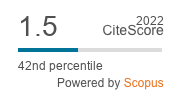Non-alcoholic fatty liver diseases (NAFLD) are particularly prevalent in the general Western adult population, with around one third of the population suffering from the disease. Evidence shows that NAFLD is associated with metabolic syndromes such as obesity, insulin resistance, and hypertension. Currently, the sole therapy for NAFLD involves exercise intervention. Studies showed that, with and without weight loss, exercise interventions produced a significant cutback in intrahepatic lipid content in humans, but better controlled studies that can investigate the cellular and molecular mechanisms are still lacking. In the current study we perform RNA sequencing analysis on liver samples from C57BL/6 mice submitted to aerobic exercise and diet interventions that are human-translatable and determine the genetic expression signature of exercise in the NAFLD onset. We show that aerobic exercise affects genes and pathways related to liver metabolism, muscle contraction and relaxation, immune response and inflammation, and development of liver cancer, counteracting non-alcoholic steatohepatitis and hepatocellular carcinoma development. While genes and pathways implicating immune response are activated by aerobic exercise in all interventions, the most effective intervention in terms of improvement of NASH is the combination of aerobic exercise with change of diet.
RESEARCH ARTICLE
Gene expression signature of exercise and change of diet on non-alcoholic fatty liver disease in mice
L. Melo Related information
1Laboratory of Investigative Toxicology and Pathology, Department of Environmental and Occupational Health, Indiana School of Public Health, 2719E 10th St, Indiana University, Bloomington, IN, 47405, USA.
2University of Pittsburgh Medical School, 200 Lothrop St, Pittsburgh, PA 15213, USA.
, A. Hagar Related information2University of Pittsburgh Medical School, 200 Lothrop St, Pittsburgh, PA 15213, USA.
3History & Philosophy of Science & Medicine Department, Indiana University, 1020 E Kirkwood Ave, Bloomington, IN 47405, USA.
4Intelligent Systems Engineering Department, Indiana University, Bloomington, IN, USA.
, J.E. Klaunig Related information4Intelligent Systems Engineering Department, Indiana University, Bloomington, IN, USA.
1Laboratory of Investigative Toxicology and Pathology, Department of Environmental and Occupational Health, Indiana School of Public Health, 2719E 10th St, Indiana University, Bloomington, IN, 47405, USA.
*Corresponding author: jklauni@indiana.
*Corresponding author: jklauni@indiana.
Comparative Exercise Physiology: 18
(2)- Pages: 143 - 154
Published Online: December 13, 2021
Abstract
Keywords: exercise, NASH, liver, endurance exercise, RNA-sequencing
2023 Journal Impact Factor
0.9
source: Journal Impact Factor 2023™ from Clarivate™

Institutional Offers
For institutional orders, please contact [email protected].
Purchase Options
-
-
-
A. Byström, H.M. Clayton, E. Hernlund, M. Rhodin and A. Egenvall
-
L. Wright, E. Hernlund, C.T. Fjordbakk, B. Ytrehus, E. Law, M. Uhlhorn and M. Rhodin
-
Jane Williams and David Marlin
-
P.S. Rejeki, A. Pranoto, R.E. Prasetya and S. Sugiharto
-
A. Byström, H.M. Clayton, E. Hernlund, M. Rhodin and A. Egenvall
-
A. Andarianto, P.S. Rejeki, , A. Pranoto, T.W. Aga Seputra, and M. Miftahussurur
-
E.J. Hall and A.J. Carter
-
L. St. George, S.H. Roy, J. Richards, J. Sinclair and S.J. Hobbs




